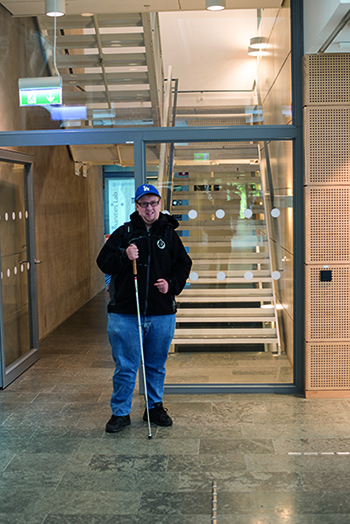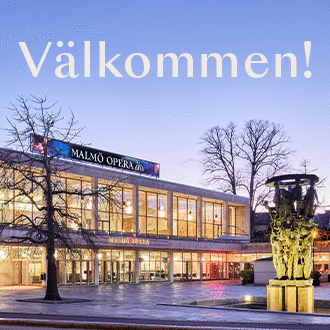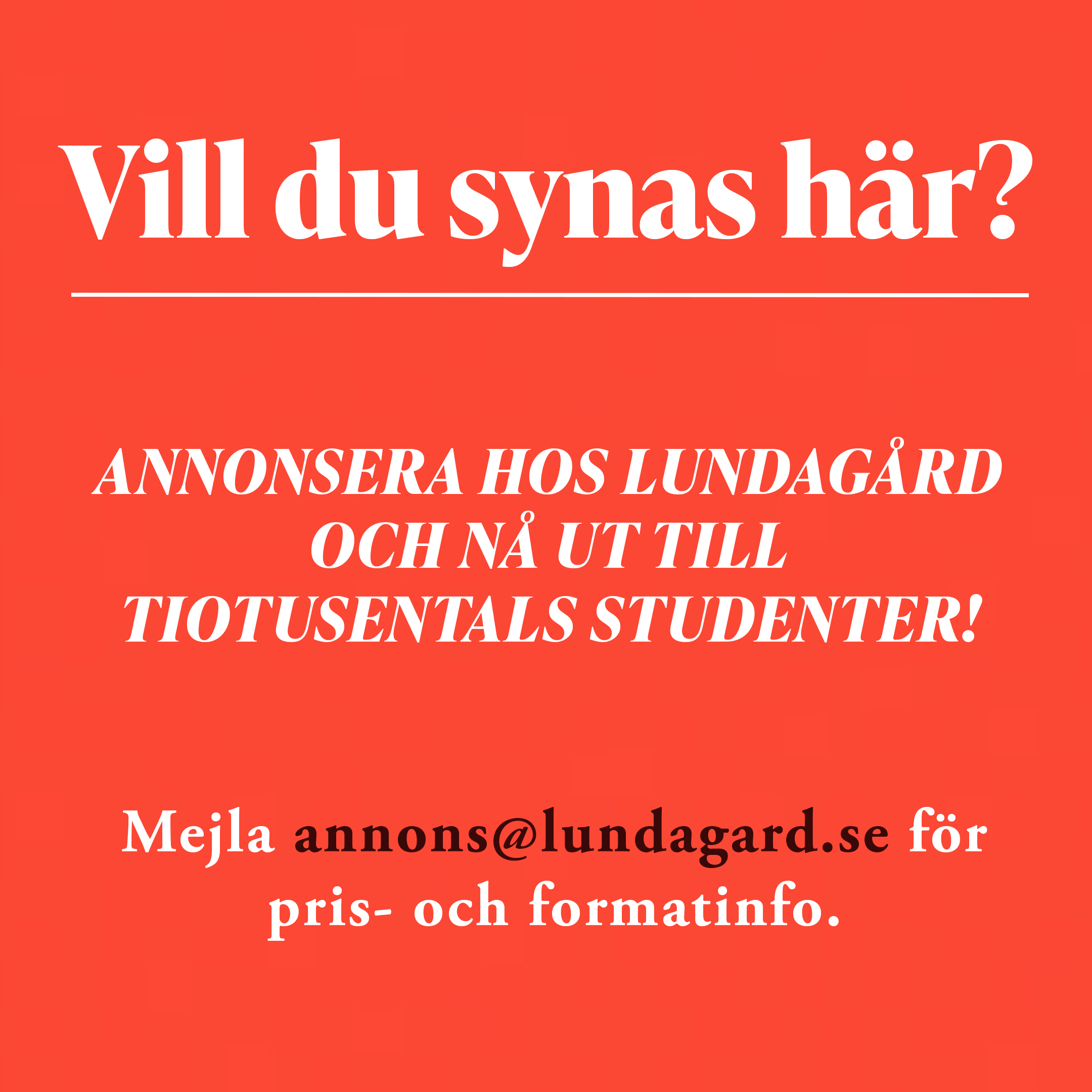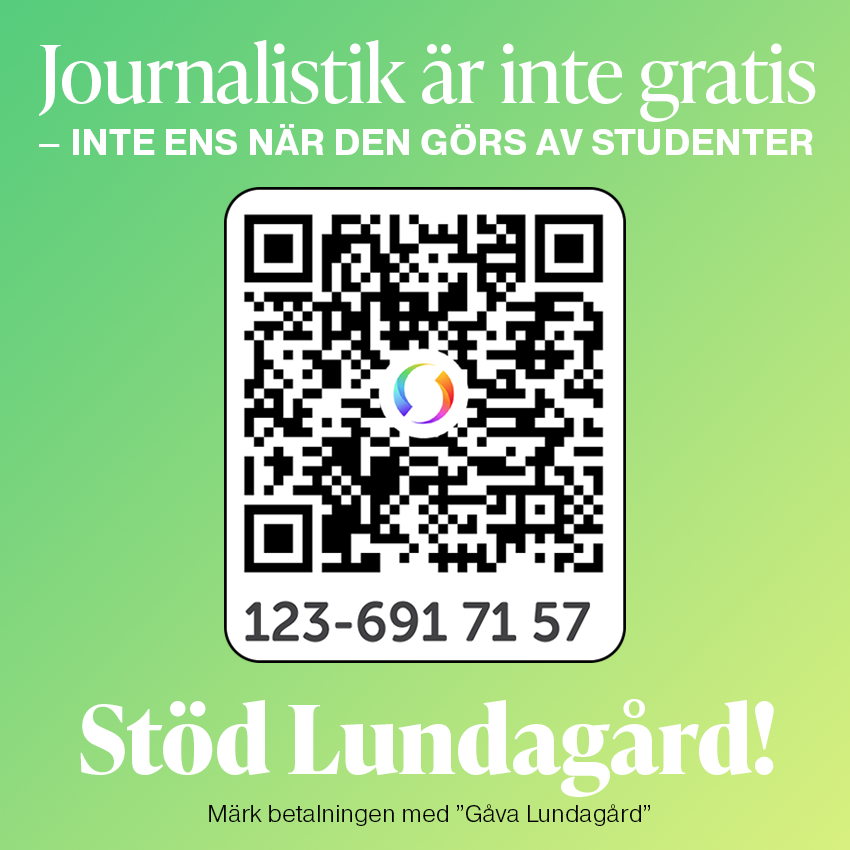The university is obligated to, as far as possible, offer equal terms to all students. Accessibility for students with disabilities has increased. But simultaneously those responsible are wrestling with opposing needs, and it is criticized, that work often stops at good intentions.
Text: Felicia Green and Simon Appelqvist
Translation: Estrid Ericson Borggren
A systematic metallic clinking accompanies Jonathan Nyman, an ethnology student, across the tiled stone floor. He follows the tracks that lead him close past the cafeteria queue that has started to form in anticipation of the morning’s lectures at the Joint Faculties of Humanities and Theology at LUX. He has been studying at Lund University since graduating high school seven years ago.
“I’ve studied a few different things. I started out with taking some German at the Centre for Languages and Literature, and since then I’ve taken, among other subjects, Swedish and History”, he says.
Jonathan slows down as the metal tracks reach a sudden end and then continue to the right. After a few sweeping motions with his arm, he finds the tracks again and follows them to an empty table.
He can differentiate between light and darkness, but he cannot discern contours.

“I have severe vision impairment. I also have cataracts, but I can’t have surgery, as my eye-lens is so fragile that surgery means endangering my eyesight.”
It was when he started primary school that the problems with his vision first appeared. In upper secondary school, his worsening vision required him to use a white cane and audio books.
“It was a big readjustment. I can no longer read books or newspapers. I can see that there’s text, but I can’t possibly read what it says”, he continues.
Jonathan is one of roughly 1600 students at Lund University being offered support from Pedagogiskt stöd (Accessibility Officers), and the number has been going up. In 2010, 574 students were granted support, meaning that until today there has been an increase of almost 180 percent.
“There are many explanations for the increase. One is that it’s detected earlier and that students now aren’t ashamed to ask for help. Today it’s not as stigmatized to have a disability. Another explanation could be that future students research what types of support are given and choose to apply to a university where the support seems good”, says Lena Örnberg, head of the office at Student health and Study Support and Advising Services at Lund University.
Pedagogiskt stöd offers learning support to students with a lasting disability, for example, note-taking, talking books and speech synthesis, study support mentor, or individual tutoring. To be approved for support you need to provide documentation to prove that you have a disability. Learning support is statutory and must be available at all higher education institutions. The university is obligated to, as far as possible, offer equal terms to all students.
“In an ideal world there would be no need of us, and all lecturing and course development would be adapted for all. But that’s not how the world is”, says Lena Örnberg.
Charlotte Tornbjer is superintendent for Maintenance unit LUX and chairperson for the building board at LUX, meaning that she oversees the shared facilities and the shared services in the building and that she has got the coordination responsibility for the physical work environment at all of LUX. She feels that focus on accessibility has been on the constant increase, and points out that at LUX they work with the issue on many levels.
“All units are part of the systematic work on a faculty-, institution-, and building level. On each level, we have student representatives, which is important. We also have safety inspections once a year, and we have a work environment coordinator in possession of immense skills. It’s something we’ve invested in, and it’s being introduced on other faculties now as well”, says Charlotte Tornbjer.
She describes accessibility and work environment as very complex, but interesting, questions to work with.
“That which increases accessibility and creates a better work environment for one person can clash with the needs of another. Hence reflection and analysis are required before any changes are made”, she says.
Massive brick buildings rise on the grounds of the Faculty of Engineering at Lund University (LTH). Furthest to the north a building stands out from the rest, the Ingvar Kamprad Design Centre (IKDC). It is a futuristic building made from larch, concrete, and glass, and since 2002 the Department of Design Sciences has been taking up residence here. One of the seven sub-units is Certec. There is one focus for Certec’s research and education: that through developed and useful technology better conditions are given to persons with disabilities. The basic idea is to examine how technology can support the human in everyday life, and it is based on a user perspective. A very odd perspective, when the operation started in the late 80’s. On the 5th floor, furthest away in a long corridor, is Per-Olof Hedvall, subject representative at Certec.
“We have two angles for the operation. One is rehabilitation technique, that is technical solutions which can function as some sort of assistance. The other angle, at least as big, is about universal design. That means that when something new is to be produced in society, it should be able to be used by everybody without having to make special customizations. It’s about doing things right from the beginning and avoiding expensive reconstructions”, says Per-Olof Hedvall.
In recent years both matters of inclusion and an increased focus on diversity perspective have grown more and more in their operation. As an example, it is mandatory for an industrial design student to take a theoretical as well as a practical course in universal design.
“By focussing on inclusion, we can make the products more flexible so that more can use them without having to make special adjustments. Then it becomes less singled out. A works-for-all perspective is needed, and we are contributing to that”, says Per-Olof Hedvall.
By taking small steps and by allowing the users to be part of the process, a cooperation is established between us and the users. Otherwise, there is a large risk of spending too much energy on coming up with irrelevant solutions.
“It’s about the whole life. Not just about needs, but also dreams and wishes. We try to work as close to the human as possible. How else are we to know what humans need?” asks Per-Olof Hedvall.
At LUX it is past ten, and Jonathan Nyman’s lecture in ethnology is about to begin. He brings out his cane and follows the tracks in the floor. Again, he passes the queue to the cafeteria, which from the looks of it has grown yet some more.
A while back he had the opportunity to be advising on how LUX could increase availability, this after he having to notice that the tactile paving in the A-building was not sufficient.
“But a problem for me is that the doors and walls in here have the same colour, which makes them difficult to see, he says and explains how he orients himself in the building.”
“The door number usually tells which floor the lecture is on. So, I use my speech synthesizer to listen to the schedule and hear which room I’m supposed to be in. Then I orient myself by counting stairs, and often I ask someone I meet.”
Jonathan says that he is overall happy with the help the university offers him through Pedagogiskt stöd (Accessibility Officers). Among other things, he has been assigned a co-student who takes notes for him during lectures and a mentor in terms of a student who has taken the course already. He also has a contact at the University library who helps him find the audio book-versions of the course literature.
“What makes my studying different from others’ is that I need to search more thoroughly in the course literature. I have, for example, difficulties with getting an overview of what’s to be read, but have to try to navigate myself relying on page-numbers and titles”, says Jonathan.
In the future Per-Olof Hedvall, subject representative at Certec, believes and hopes that society becomes better at working with an including perspective and that it will be the established main strategy. He means that we know for sure that technological advancements are rushing forwards.
“Today we have two important aspects at Certec: that people with disabilities shall benefit from the progress, and user participation, that a person with a disability is co-developing the product and affects the process”, he says.
In the office next-door is Håkan Eftring, researcher and lecturer at Certec. The desk in the centre of the room is cluttered with piles of paper and models. In a corner stands a robot, as if taken from the Disney movie WALL-E, staring into the wall.
“All students here won’t be aid developers. The idea is to develop a consciousness in the student and thereby an awareness that there are many different needs among us humans. They should get a “BAM”, this is what the world looks like”, says Håkan Eftring.
He spins his desk chair around and grabs a cane. It looks like a transparent ski pole with string lights pulled through it. Last year, the invention gave the LTH students Linus Hemme and Hanne Heingård the scholarship “Hjälpmedel för att underlätta vardagen för funktionshindrade” (Aids for facilitating the everyday life of people with disabilities).
“This is a fold-up white cane for people with vision impairment. When you push the button, it lights up. They compared it to a traditional white cane with reflectors. The students’ cane was considerably more effective and was noticed by motorists more than 150 metres away”, says Håkan Eftring and puts the cane back against the wall.
When LUX was built three years ago, an accessibility consultant was used during construction, so that it would follow the then current requirements and guidelines. But since then there have been some changes. Other students than Jonathan Nyman have gotten in contact when they have discovered shortcomings in the accessibility. One example is another student who pointed out that the pillars in the building had the same colour as the walls, and hence were impossible to see.
“But that was easily fixed, now we have tape marking the pillars”, says Charlotte Tornbjer.
But to keep LUX accessible, students need to be prevented from disturbing the accessibility.
“We’ve had problems with students moving furniture and putting it on the tactile paving, without thinking about what they’re doing. That is something we try to inform them about, but it’s difficult to reach everyone, says Charlotte Tornbjer and clarifies that it is not only a question about information but that she and other staff members are continuously moving tables and chairs that are blocking the way.”
Charlotte Magnusson is a docent and project manager at Certec. Her office is in such a mess that an interview there is close to impossible. Instead we take the elevator down to the lab where she shows us a handful of Certec’s projects.
“The main difference today compared to when we started is the technical development, which is giving us so many more opportunities. Another difference is the shift in attitude regarding universal and inclusive design. It’s becoming more accepted that things are designed in an accessible way”, says Charlotte Magnusson.

LUX consists of three buildings of varying age, the A-, B-, and C-buildings which are all connected. The tracks that Jonathan follows on his route through the A-building abruptly ends in front of a glass wall that marks the entrance to the B-building, which completely lacks tactile paving. He makes his way past the glass wall and through the door opening to the stairwell, diagonally to the left of the tracks. He counts the stairs but fails to reach the 2nd floor, where his classroom is supposed to be.
“Excuse me, where am I?” he asks a group passing by.
“You’re on floor one and a half”, says a man and shows the direction to the small stair leading up to the 2nd floor.
Why the B-building, unlike the other buildings at LUX, lacks tactile paving, Charlotte Tornbjer, does not know.
“The B-building is old and I don’t know which considerations have been done earlier, but it should fulfil the requirements. There’s tactile paving from the LUX main entrance. That entrance is completely adapted to be accessible, which the entrance to the B-building isn’t, which means that for example, you can’t get in with a wheelchair through that entrance”, she says.
Charlotte Tornbjer also believes, therefore, the decision was made not to install any tactile paving there.
On the question of what could be done better regarding accessibility at LUX, Charlotte Tornbjer replies that it is about information to the students.
“Something that could be better, and which we are working with now, is to make it clearer for the students who to contact regarding both physical and invisible disabilities”, says Charlotte Tornbjer.
That more information is needed about how one as a student gets help, is an opinion shared by Eric Mace. He is formerly responsible for student’s social matters at the Student Union at Lund University, Faculty of Engineering, and is still involved in questions regarding accessibility and work environment. Today he is among other things student representative for Lund University in the Central Safety Committee, which has the overall responsibility for the university students’ and employees’ work environment. To navigate the way to the correct support as a student Mace describes as a mace.
“The university is spending a lot of resources on student support, but if the students can’t find it, it’s wasted”, he says.
Accessibility is a question of work environment, and Eric Mace encourages all students to report problems with the work environment.
“It’s not always a building can be reconstructed. But if tactile paving, for example, is missing, then that’s something which should be fixed. I’ve noticed that problems aren’t fixed until they are reported”, he says.
To get study support it is, according to Lena Örnberg at Studenthälsan, the individual student’s responsibility to provide documentation to prove the student has a lasting disability.
“When you’re new at the university it’s important to apply for the support as early as possible, preferably as soon as you’re accepted. It’s good if the students themselves are active and communicates with the institution and the study councillors out at the faculties”, she says.
According to Lena Örnberg following up of students is something which could be more developed. Today it is done if time is available or the students themselves get in contact.
“We’re in constant need of students who want to work as mentors for the students in need of extra support. Our dilemma is that the mentors disappear once they’re finished with their own studies”, she says.
Jonathan Nyman barely makes it in time to his lecture at LUX. In the small classroom, there are already 20-something students. He sits down and puts his hands together on the bench in front of him, and listens to the lecture while the scraping noise of the other students’ notes fills the room.
“One can think about how singular objects, like a couch, becomes part of the consumers’ lives”, the lecturer says in front of a PowerPoint slide with a blue couch.

Even if Jonathan Nyman currently is studying Ethnology he is considering taking up his studies in History later.
“History is a subject I’m really dedicated to, and I’m looking at the bachelor programme in it. It’s interesting to see how people have lived and tackled their problems before us.”
But despite a growing acceptance in society, Charlotte Magnusson at Certec means that it all too often stops at good intentions.
“Even though it’s known that including accessibility is important, there are still facilities at the university without the possibility for wheelchairs to get in through the main entrance along with everybody else. How can it be an issue in Lund, a city with such large competence within the subject”, asks Charlotte Magnusson.










